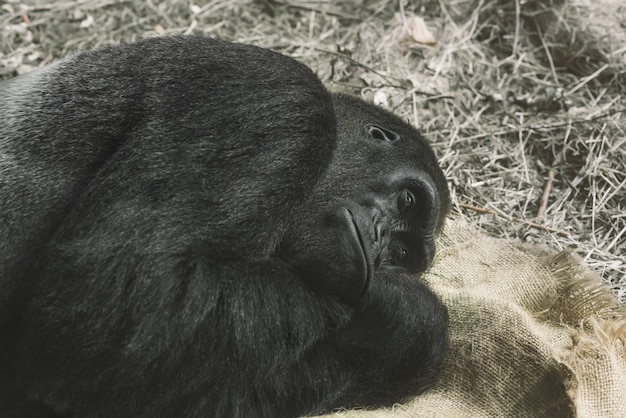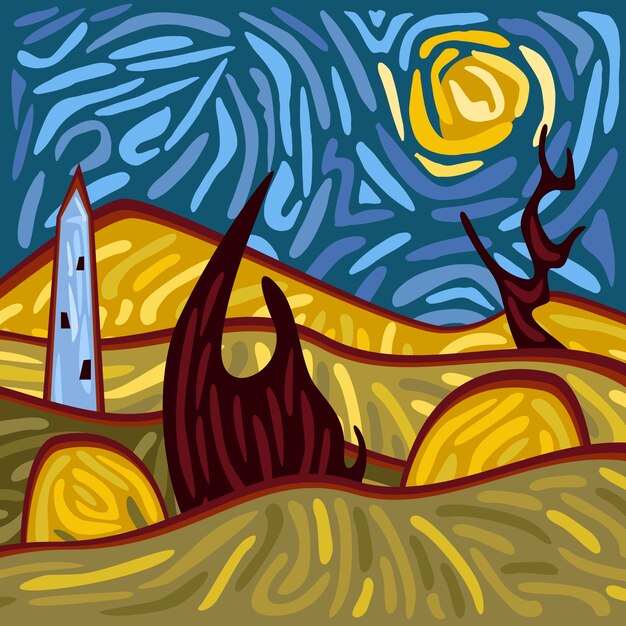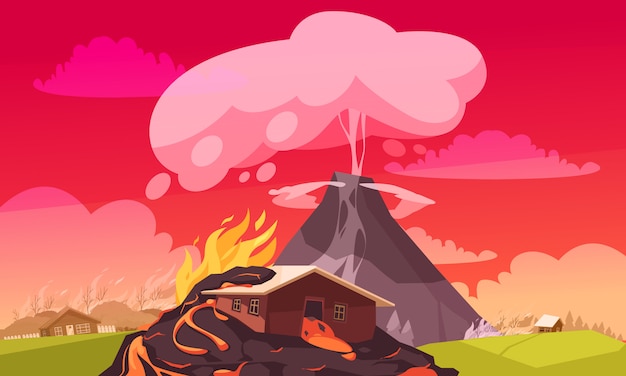Amazing Facts About Wolves
Wolves are highly social animals, living in packs that can consist of up to 30 individuals.
A wolf’s sense of smell is 100 times more powerful than a human’s, which helps them hunt and find their way.
Wolves howl to communicate with other pack members, as well as to mark their territory.
Unlike domestic dogs, wolves have long, slender legs built for speed and endurance.
Wolves are excellent swimmers, and they use this skill to cross bodies of water in search of food.
Wolves have a complex hierarchy within their packs, with a dominant alpha pair leading the group.
The gestation period for a wolf is about 63 days, and a female wolf can give birth to up to six pups.
Wolves have a varied diet and can eat anything from deer and elk to smaller prey like rabbits and rodents.
Wolves have a natural instinct to play, which helps them develop coordination and hunting skills.
A wolf’s bite force can exert a pressure of around 1,500 pounds per square inch, strong enough to crush bones.
Wolves have incredible hearing and can detect sounds from up to six miles away.
Wolf fur comes in different colors, including gray, brown, black, and white, depending on the subspecies.
A pack of wolves typically covers an average of 30 square miles in their territory.
Wolves have a wide range of vocalizations, including growls, barks, whines, and yips.
The average lifespan of a wolf in the wild is usually around 6-8 years, but some have been known to live up to 13 years.
Wolves have a keen sense of teamwork when hunting, allowing them to take down larger prey.
Wolves have a powerful jaw structure that allows them to crush bones and eat every part of their prey.
Wolves can run at speeds of up to 35 miles per hour, making them incredibly fast and agile.
Despite their fearsome reputation, wolves are typically shy and will avoid human encounters if possible.
Wolves have a heat-releasing mechanism in their paws that helps them keep cool in hot climates.
Wolves have a highly developed sense of territory and will defend it fiercely if threatened.
The largest wolf ever recorded weighed over 175 pounds and stood at 38 inches tall at the shoulder.
Wolves have an incredible ability to adapt to different environments, from extreme cold to desert regions.
A wolf’s eyesight is well-adapted for night vision, allowing them to see clearly in low-light conditions.
Wolves have a layer of thick fur that helps insulate them from the cold and keeps them warm in winter.
Wolves engage in play-fighting to practice hunting skills and establish dominance within the pack.
Wolves are highly intelligent animals, capable of problem-solving and adapting to new situations.
Wolves have a strong sense of loyalty to their pack members, often risking their own lives to protect them.
Wolves have a unique vocalization known as a whuff, which is used as a friendly greeting within the pack.
Wolves have a near-perfect sense of direction and can travel long distances to find new territories.
Wolves use body language, such as tail position and facial expressions, to communicate with other pack members.
Wolves have a thick layer of fat under their skin that helps them survive in cold climates.
Wolves have a strong jaw muscle that allows them to hold onto their prey, even when it tries to escape.
Wolves have a keen sense of smell that can detect scents from several miles away.
Wolves have retractable claws that help them grip the ground while running and climbing.
Wolves have a gland near their tail that produces a scent used for marking territory.
Wolves have a sophisticated hunting strategy that involves cooperation and coordination among pack members.
Wolves have a coat of fur that changes with the seasons, becoming thicker and lighter in color during winter.
Wolves have a unique howling pattern that helps them identify other pack members and locate them in dense forests.
Wolves have a strong sense of family, and pack members often participate in raising and caring for the young pups.
Wolves have a hierarchical social structure, with dominant individuals leading and making decisions for the pack.
Wolves have an acute sense of hearing that allows them to detect the movement of prey even in dense vegetation.
Wolves have a sharp sense of taste and can differentiate between different types of meat.
Wolves have a strong sense of curiosity and will explore their surroundings to learn about their environment.
Wolves have a fascinating evolutionary history, dating back millions of years, and they play a crucial role in maintaining ecosystem balance.
Interesting Facts About Wolverine
Wolverine’s real name is James Howlett.
Wolverines are the largest members of the Mustelidae family.
A wolverine’s scientific name is Gulo gulo.
Wolverines have a reputation for being extremely fierce and tenacious.
Wolverines have powerful jaws and sharp teeth that can crush bones.
Despite their size, wolverines are adept climbers and can scale trees easily.
Wolverines have a sense of smell that is seven times stronger than a bloodhound’s.
Wolverines have retractable claws that help them dig through snow and ice.
Wolverines are solitary animals and prefer to live and hunt alone.
Wolverines have thick fur that helps protect them from extreme cold temperatures.
Wolverines are highly territorial and can mark their territory with scent markings.
Wolverines can travel long distances in search of food and territory.
Wolverines are capable swimmers and can cross rivers and lakes with ease.
Wolverines are opportunistic eaters and will scavenge for food if necessary.
Wolverines have a diverse diet that includes small mammals, birds, carrion, and berries.
Wolverines have a reputation for being able to take down prey much larger than themselves.
Wolverines are known for their ability to withstand harsh weather conditions.
Wolverines are native to arctic and subarctic regions around the world.
Wolverines are excellent problem solvers and can navigate complex environments.
Wolverines have a unique vocalization called a growl-bark that they use for communication.
Wolverine populations are declining due to habitat loss and climate change.
Wolverines have been used as symbols of bravery and toughness in popular culture.
Wolverines have a lifespan of 8-13 years in the wild.
Wolverines have a stocky and muscular build, contributing to their strength.
Wolverines have the ability to regenerate damaged tissue and heal quickly.
Wolverines have been known to cache extra food for later consumption.
Wolverines are able to detect buried food under several feet of snow.
Wolverines have been observed performing playful behaviors, such as sliding down snow slopes.
Wolverines have a hinged wrist joint that allows them to rotate their paws 180 degrees.
Wolverines have been known to defend their territory against much larger predators.
Wolverines have a highly developed sense of hearing that helps them locate prey.
Wolverines are known to have a fierce maternal instinct and protect their young at all costs.
Wolverines are not closely related to wolves, despite their similar-sounding name.
Wolverines have a reputation for being untamed and unpredictable.
Wolverines have been associated with legends and folklore in various cultures.
Wolverines have been depicted in comic books, movies, and video games.
Wolverines have been featured in scientific research due to their unique adaptations.
Wolverines have been used as mascots for sports teams and organizations.
Wolverines have a high metabolism, allowing them to maintain their energy levels in extreme conditions.
Wolverines have a complex social hierarchy within their territories.
Wolverines have been known to chew through tough materials, such as bones and frozen meat.
Wolverines have a thick layer of fat beneath their skin to insulate them during cold winters.
Wolverines have been reintroduced to certain areas to help maintain natural ecosystems.
Wolverines have been used as symbols of resilience and perseverance.
Wolverines have a strong bite force that allows them to crack open even the toughest nuts.
10 Fascinating Wind Energy Facts
Wind energy is a sustainable and renewable source of power.
Harnessing the power of the wind is like capturing nature’s own superpower.
Wind turbines generate clean and green energy to power our world.
Wind energy is becoming increasingly popular as a viable alternative to fossil fuels.
Did you know that wind energy is one of the fastest-growing sources of power globally?
Wind turbines are elegant and majestic, and they can be found in beautiful wind farms around the world.
Wind energy helps reduce our carbon footprint and combat climate change.
Wind power is a reliable and consistent source of electricity.
Harnessing the power of the wind is one way to ensure a greener and more sustainable future.
Wind turbines can transform even the gentlest breeze into electricity.
Wind energy is a key weapon in the fight against air pollution and global warming.
Harnessing wind power can bring economic benefits to local communities and create jobs.
Wind turbines are a symbol of progress and innovation in the renewable energy sector.
Did you know that wind energy could potentially power the entire world multiple times over?
Wind energy is a free and abundant resource that we should take advantage of.
Wind farms can coexist with other land uses, such as agriculture or nature conservation.
Wind energy is a powerful force that can be harnessed to power our homes and cities.
Wind turbines silently spin in the wind, producing clean energy without noise pollution.
Wind power is one of the most cost-effective sources of energy available today.
Wind farms can create a visually stunning landscape, with rows of turbines standing tall against the sky.
Wind energy can diversify our energy sources and reduce our dependence on volatile oil markets.
Wind turbines can be placed offshore, reducing the need for land and minimizing environmental impact.
Wind energy can help reduce energy poverty and provide electricity to remote areas.
Did you know that wind energy is a form of solar energy? The sun’s heat creates air movement, which is harnessed by turbines.
Wind power is at the forefront of the transition to a more sustainable and eco-friendly world.
Wind turbines are like modern-day windmills, spinning to generate power instead of grinding grain.
Wind energy is a clean and efficient way to meet our growing energy demands.
The wind’s energy is free for the taking, and wind turbines capture and convert it into usable electricity.
Wind power is an investment in a brighter and greener future for generations to come.
Wind energy technologies continue to evolve, making them even more efficient and cost-effective.
Wind turbines are a symbol of our commitment to a cleaner and greener world.
Wind energy is a key player in reducing our dependence on fossil fuels and mitigating climate change.
Harnessing the power of the wind is like harnessing the very breath of the Earth.
Wind farms contribute to the resilience and stability of our energy grid.
Wind energy is a critical component of a diversified energy portfolio.
Wind turbines need just a gentle breeze to start spinning and generating power.
Did you know that wind energy is a form of kinetic energy? The moving air has the potential to do work.
Wind power is an investment in energy independence and national security.
Wind energy is environmentally friendly, producing zero greenhouse gas emissions and pollution.
Wind turbines are sleek and futuristic, showcasing humanity’s ability to coexist with nature.
Wind energy is a smart and responsible choice for a sustainable and clean energy future.
Wind farms can be a tourist attraction, offering visitors a scenic and educational experience.
Wind turbines are a testament to human ingenuity and engineering prowess.
Harnessing wind power is like capturing the power of invisible giants gently blowing in the wind.
Wind energy is a beacon of hope for a greener, cleaner, and more sustainable world.
What You Need to Know About Van Gogh – Fascinating Facts
Vincent van Gogh only sold one painting during his lifetime.
Van Gogh’s famous painting, Starry Night, was created while he was in a mental asylum.
Van Gogh was known for his vibrant and bold use of colors in his artwork.
Van Gogh’s favorite color was yellow, which is evident in many of his paintings.
Van Gogh suffered from mental health issues, including depression and anxiety.
Van Gogh often painted self-portraits, depicting his own likeness in various stages of his life.
Van Gogh’s paintings are now considered some of the most valuable in the world, with one of his works selling for over $100 million.
Despite his struggles, Van Gogh completed over 2,000 artworks during his short life.
Van Gogh was influenced by artists such as Jean-François Millet and Rembrandt.
Van Gogh’s brother, Theo, provided him with financial and emotional support throughout his life.
Van Gogh created many of his famous works, including The Starry Night and Sunflowers, in just the last few years of his life.
Van Gogh was largely unrecognized during his lifetime and only gained significant recognition after his death.
Van Gogh’s paintings often depicted landscapes and rural scenes, reflecting his love for nature.
Van Gogh was an avid reader and drew inspiration from literature in his artwork.
Van Gogh’s painting technique included thick, textured brushstrokes known as impasto.
Van Gogh created several versions of the same subject, experimenting with different color palettes and compositions.
Van Gogh’s art style greatly influenced future art movements such as Expressionism.
Van Gogh had a difficult relationship with his father, who opposed his artistic pursuits.
Van Gogh once gave his ear to a woman as a token of affection, a notorious incident in his life.
Van Gogh spent time living in various European cities, including Paris and Arles.
Van Gogh admired Japanese artwork and incorporated elements of their style into his own paintings.
Van Gogh’s artwork was often criticized by contemporary art critics, who did not appreciate his unconventional style.
Van Gogh’s love for the night sky is evident in many of his paintings, where he depicted stars and moonlit scenes.
Van Gogh wrote many letters to his brother Theo, documenting his artistic journey and struggles.
Van Gogh’s life and art have inspired numerous books, films, and exhibitions.
Van Gogh suffered from frequent bouts of poor physical and mental health, which impacted his artistic output.
Van Gogh’s paintings are characterized by their emotional intensity and raw expression.
Van Gogh was friends with fellow artist Paul Gauguin, with whom he had a volatile relationship.
Van Gogh’s most expensive painting sold at auction is Portrait of Dr. Gachet.
Van Gogh often painted scenes from everyday life, capturing the beauty in the ordinary.
Van Gogh’s mental health deteriorated over time, leading to his eventual suicide at the age of
Van Gogh’s fascination with sunflowers is evident in his series of paintings depicting the flower.
Van Gogh’s legacy continues to inspire contemporary artists around the world.
Van Gogh’s paintings often convey a sense of movement and energy, even in still subjects.
Van Gogh used complementary colors, such as blue and orange, to create visual harmony in his paintings.
Van Gogh’s artistic career was relatively short, spanning around a decade.
Van Gogh’s distinctive art style is instantly recognizable and has become iconic in the art world.
Van Gogh’s artwork was not widely exhibited during his lifetime, with his first major retrospective held several years after his death.
Van Gogh’s art was heavily influenced by his emotions and personal experiences.
Van Gogh’s paintings often feature thickly layered paint, creating a sense of texture and depth.
Van Gogh’s use of bold, contrasting colors was inspired by the Impressionist movement.
Van Gogh’s painting, The Potato Eaters, depicts a group of peasants, highlighting his interest in representing the working class.
Van Gogh’s unique perspective and unconventional compositions help to distinguish his artwork from other artists of his time.
Van Gogh’s tragic life story adds another layer of depth and meaning to his artwork.
Van Gogh’s art continues to captivate audiences worldwide, leaving a lasting impact on the art world.
Turtle Facts
Turtles have been around for more than 200 million years.
Turtles are reptiles and belong to the Order Testudines.
Turtles have a hard protective shell made up of over 50 bones.
There are more than 300 species of turtles.
The largest turtle species is the leatherback turtle, which can weigh up to 2,000 pounds.
Turtles are known for their slow movement on land but are excellent swimmers.
Some turtles can live up to 150 years or more.
Turtles lay their eggs on land and often return to the same beach where they were born.
The gender of turtle hatchlings is determined by the temperature of the nest.
Turtles have a unique ability to retract their heads and limbs into their shells for protection.
The blood of certain species of turtles has antifreeze properties, allowing them to survive in cold climates.
Turtles have a keen sense of smell and can detect food from long distances.
Some turtles can go without food for several months.
Unlike other reptiles, turtles cannot breathe through their mouths. They breathe through their nostrils instead.
Turtles are omnivorous, meaning they eat both plants and animals.
The Galapagos tortoise is the largest living species of tortoise and can live for over 100 years.
Turtles are known for their long lifespan and are often considered a symbol of longevity.
Turtles have excellent eyesight and can see color.
Some turtles can close their ears to prevent water or sand from getting in.
Turtles have a strong sense of hearing and can detect low-frequency sounds.
Turtles have been revered in many cultures around the world and are often associated with wisdom and protection.
Turtles are ectothermic, meaning they rely on external sources of heat to regulate their body temperature.
Turtles have a slow metabolism, which allows them to survive with little food.
Some species of turtles can hibernate during the winter months.
Turtles have been on Earth longer than dinosaurs.
Turtles have an excellent sense of direction and can navigate using Earth’s magnetic field.
Certain species of turtles are known to migrate long distances to lay their eggs.
Turtles have a bony plate on the underside of their shell called the plastron.
The upper part of the shell is called the carapace.
Turtles have a strong bite and can exert a lot of pressure with their jaws.
Turtles have a beak-like mouth, which they use to tear and chew food.
Some turtles have a sharp beak that allows them to consume prey such as fish and insects.
Turtles have a well-developed sense of touch and can feel vibrations in the water or ground.
Turtles are cold-blooded, which means their body temperature changes with the environment.
Turtles can spend long periods of time underwater without needing to breathe.
Turtles have powerful flippers that help them swim efficiently.
Turtles have a unique way of reproducing, with males using their front claws to court females.
Some turtles can retract their heads sideways instead of straight back into their shells.
Turtles have a long lifespan partly because their organs age at a slower rate than other animals.
The shell of a turtle is made up of keratin, the same substance as human hair and nails.
Turtles have been used for scientific research due to their ability to absorb oxygen through their skin.
Turtles are an important part of the ecosystem as they help control populations of certain prey species.
Turtles are surprisingly agile swimmers and can reach impressive speeds in the water.
Turtles can communicate with each other using a variety of vocalizations.
Turtles play an important role in folklore and mythology in many cultures, often symbolizing patience, wisdom, and longevity.
Interesting Facts about the Water Cycle
The water cycle is a continuous process that ensures the availability of fresh water on Earth.
Water evaporates from oceans, lakes, and rivers and enters the atmosphere as water vapor.
Clouds are formed when water vapor condenses into tiny water droplets or ice crystals.
Precipitation occurs when clouds become saturated with water and water droplets fall to the ground as rain, snow, sleet, or hail.
The water cycle helps to distribute water across different regions and maintain the Earth’s natural balance.
About 97% of the Earth’s water is in the form of saltwater and only 3% is freshwater.
Water can stay in the atmosphere for an average of 9 days before it precipitates.
The process of evaporation is accelerated by heat, wind, and sunlight.
Water can also evaporate directly from plants through a process called transpiration.
The water cycle is crucial for agriculture as it provides water for crop growth and irrigation.
The process of condensation forms clouds that can be of different shapes and sizes.
Rainfall can be influenced by topography, wind patterns, and temperature gradients.
The water cycle helps to replenish underground water sources such as aquifers.
Water in the atmosphere can travel long distances before falling as precipitation.
The temperature at which water vapor condenses depends on factors such as air pressure and humidity.
Clouds can take various forms, including cumulus, stratus, and cirrus clouds.
The water cycle plays a key role in maintaining the Earth’s climate and regulating global temperatures.
The majority of Earth’s freshwater is stored in ice caps, glaciers, and underground water sources.
The water cycle is essential for the survival of plants and animals, as they depend on freshwater for hydration.
The process of evaporation leads to cooling, which can help moderate the Earth’s temperature.
Rainfall patterns can vary in different regions, contributing to the diversity of ecosystems.
Water from rivers and streams eventually flows into oceans, completing the water cycle’s loop.
The water cycle is a fundamental concept in hydrology, the study of water on Earth.
The process of freezing water forms ice, which can then melt and contribute to the water cycle.
The water cycle also plays a role in shaping the Earth’s landscapes through erosion and sedimentation.
Water is a universal solvent, meaning it can dissolve various substances and transport them within the water cycle.
Changes in the water cycle can impact weather patterns, leading to droughts or floods.
The water cycle can be disrupted by human activities such as deforestation and pollution.
Water droplets in clouds can collide and merge, forming larger droplets that eventually fall as precipitation.
Fog is a type of cloud that forms at ground level due to condensation of water vapor.
The water cycle is a continuous exchange of water between the atmosphere, land, and oceans.
The water cycle helps to regulate the Earth’s energy balance by absorbing and releasing heat.
The process of condensation releases latent heat, which can contribute to the development of storms.
Evapotranspiration is the combined process of evaporation from the Earth’s surface and transpiration from plants.
The water cycle supports a variety of aquatic ecosystems, including rivers, lakes, and wetlands.
Water molecules can exist in three states: solid (ice), liquid (water), and gas (water vapor).
The water cycle is influenced by climate factors such as temperature and precipitation patterns.
Water is essential for all forms of life, and the water cycle ensures its continuous availability.
Water management and conservation play a crucial role in maintaining a sustainable water cycle.
The water cycle is part of the Earth’s larger system, which includes the atmosphere, hydrosphere, and biosphere.
The water cycle is a dynamic process that is constantly changing and adapting to environmental conditions.
Without the water cycle, Earth would be a barren, lifeless planet with no water available for living organisms.
The water cycle helps to regulate humidity levels in the atmosphere, influencing weather conditions.
The water cycle is a complex interplay between physical processes, energy transfer, and natural phenomena.
Understanding the water cycle is essential for addressing water-related challenges such as droughts, water scarcity, and climate change.
Interesting Facts about Alabama for Kids
Alabama is known as the Yellowhammer State.
The state bird of Alabama is the Northern flicker.
Alabama became a state on December 14, 18
4. The capital city of Alabama is Montgomery.
Alabama is famous for its delicious Southern cuisine.
Alabama is home to the only commercially operated space travel program in the United States.
The largest city in Alabama is Birmingham.
Alabama is rich in natural resources, including coal, natural gas, and limestone.
The official state flower of Alabama is the camellia.
Alabama has a humid subtropical climate, with hot summers and mild winters.
Alabama is known for its beautiful Gulf Coast beaches, including the popular tourist destination of Gulf Shores.
The state song of Alabama is Alabama by Julia Tutwiler.
Alabama is home to several universities, including the University of Alabama and Auburn University.
The tallest point in Alabama is Cheaha Mountain, which stands at 2,407 feet above sea level.
Alabama is famous for its rich Civil Rights history, including being the birthplace of Rosa Parks.
The famous NASCAR racetrack, Talladega Superspeedway, is located in Alabama.
Alabama is home to the oldest Mardi Gras celebration in the United States, held in Mobile.
The largest agricultural commodity in Alabama is poultry, including chicken and eggs.
Alabama is known for its beautiful antebellum homes and historic plantations.
The Alabama Theatre in Birmingham is a popular venue for concerts and Broadway shows.
The state tree of Alabama is the longleaf pine.
Alabama is known for its vibrant music scene, including genres such as blues, country, and gospel.
The Confederate flag controversy surrounding Alabama’s state flag ended in 2020 when a new design was adopted.
Alabama is home to the largest cast-iron statue in the world, known as the Vulcan statue.
The Alabama Department of Archives and History in Montgomery is the oldest state-funded archival agency in the United States.
Alabama is home to several national parks and forests, including the Little River Canyon National Preserve.
The Edmund Pettus Bridge in Selma played a significant role in the Civil Rights Movement, particularly during the famous march to Montgomery.
Alabama is known for its passion for college football, with fierce rivalries between teams like Alabama Crimson Tide and Auburn Tigers.
The Mobile Carnival Museum showcases the history and traditions of Mardi Gras in Alabama.
The famous author Harper Lee, who wrote To Kill a Mockingbird, was born and raised in Alabama.
Alabama is home to the U.S. Space and Rocket Center, which houses the largest collection of rockets and space memorabilia in the world.
The Alabama Shakes, a popular rock band, originated from Athens, Alabama.
The state gemstone of Alabama is the star blue quartz.
Alabama has a diverse wildlife population, including white-tailed deer, black bears, and alligators.
The Birmingham Museum of Art houses over 27,000 works of art from various periods and cultures.
The state reptile of Alabama is the Alabama red-bellied turtle.
Alabama is known for its picturesque waterfalls, including DeSoto Falls and Noccalula Falls.
The Black Belt region of Alabama is named after its fertile black soil and is known for its rich agricultural heritage.
The state amphibian of Alabama is the Red Hills salamander.
Alabama has a thriving film industry, with many movies and TV shows being filmed in the state.
The USS Alabama Battleship Memorial Park in Mobile allows visitors to tour a World War II battleship and submarine.
The Mobile Museum of Art is the largest art museum along the Gulf Coast.
Alabama is home to the Monroeville courthouse, which inspired the setting of Harper Lee’s To Kill a Mockingbird.
The Alabama Sports Hall of Fame in Birmingham exhibits over 5,000 sports-related artifacts and honors outstanding athletes from the state.
Alabama is a state with a rich history, natural beauty, and a strong sense of Southern pride.
Fascinating Facts about the Sioux Tribe
The Sioux tribe, also known as the Lakota Sioux, is a Native American tribe with a rich history and culture.
The Sioux were traditionally a nomadic people, following the buffalo herds for sustenance and resources.
The Sioux tribe is made up of three main subgroups: the Lakota, Dakota, and Nakota.
The Sioux were known for their remarkable horsemanship skills, making them formidable warriors on the Great Plains.
The Sioux had a deep spiritual connection with nature and believed in the importance of living in harmony with the land.
The Sioux tribe’s traditional clothing was made from buffalo hides, adorned with intricate beadwork and feather headdresses.
The Sioux tribe utilized teepees, portable conical tents, as their primary dwellings.
The Sioux had a matriarchal society, with women playing significant roles in decision-making and tribal governance.
The Sioux tribe has a rich oral tradition, with storytelling and music playing an integral part in passing down their history and values.
The Battle of Little Bighorn, where Sioux and Cheyenne warriors defeated General Custer and his troops, is a significant event in Sioux history.
The signing of the Fort Laramie Treaty of 1868 allowed the Sioux to retain their lands in the Black Hills region.
The discovery of gold in the Black Hills led to the violation of the Treaty of 1868 and the subsequent conflicts between the Sioux and the U.S. government.
The infamous massacre at Wounded Knee in 1890 marked the end of armed resistance by the Sioux tribe.
The Sioux tribe continues to fight for their rights and sovereignty in the modern era, advocating for social justice and cultural preservation.
The Sioux have a traditional dance known as the powwow, where participants showcase their vibrant regalia and perform various dances.
The Sioux tribe has a strong sense of community and kinship, valuing collective well-being over individualism.
Buffalo holds great significance in Sioux culture, representing strength, abundance, and spiritual connection.
The Sioux language, Dakota/Lakota, is a complex and melodic language that is still spoken by some tribal members today.
The sun dance, a spiritual ceremony involving fasting and prayer, is a central component of Sioux religious practices.
The Sioux were skilled hunters and used various tools and techniques to ensure food security for their communities.
Native American activist, writer, and actor Russell Means was a prominent member of the Sioux tribe, fighting for indigenous rights.
Sitting Bull, a respected Sioux leader, played a crucial role in the resistance against U.S. government encroachments on Sioux territory.
The Black Elk, a prominent Sioux medicine man and holy man, provided insight into Sioux spirituality and culture through his teachings.
The Sioux powwow drum, a large and powerful drum, serves as the heartbeat of the powwow, guiding the dancers’ movements.
The Sioux people are deeply connected to the land and consider it their responsibility to be stewards of the earth.
The Sioux tribe has contributed significantly to the art world, with renowned Sioux artists showcasing their talent through paintings, sculptures, and beadwork.
The Sioux have a deep reverence for their ancestors and regularly pay tribute to them through ceremonies and rituals.
The Sioux believe in the existence of spiritual beings and practice various forms of spirituality, including vision quests and sweat lodges.
The Sioux have faced numerous challenges, including forced assimilation, boarding school experiences, and loss of land.
The Sioux tribe continues to maintain traditional practices, such as buffalo hunts and wild rice harvesting, to preserve their culture.
The Sioux tribal council serves as the primary governing body, making decisions that impact the entire tribe.
The Sioux are known for their intricate and decorative beadwork, incorporating vibrant colors and symbolic patterns.
The Sioux value education and strive to provide opportunities for tribal youth to learn about their language, culture, and traditions.
The Sundance Film Festival, held annually in Park City, Utah, takes its name from the Sioux sun dance ceremony.
The Sioux tribe has a strong warrior tradition, with individuals undergoing rigorous training to become skilled fighters and protectors.
The Sioux have a deep connection to their ancestral lands, especially the sacred Black Hills, which they consider a place of spiritual significance.
The Ghost Dance, a spiritual movement that originated among the Sioux, aimed to restore Native American sovereignty and cultural practices.
The Sioux believe in the concept of Mitakuye Oyasin, meaning all my relations, symbolizing their interconnectedness with all living beings.
The Sioux had a robust trading network with other tribes, exchanging goods such as buffalo hides, pottery, and food.
The Sioux performed elaborate healing ceremonies, utilizing medicinal plants and spiritual practices to restore balance and well-being.
The Dakota Access Pipeline protests, also known as the Standing Rock protests, brought international attention to the Sioux tribe’s fight for environmental justice and land preservation.
The Sioux tribe has produced talented athletes, such as Billy Mills, an Olympic gold medalist in the 10,000-meter race.
The Siege of Fort Abercrombie in 1862 demonstrated the Sioux tribe’s determination and resilience in defending their land and people.
The Sioux have a rich tradition of storytelling, passing down legends, myths, and historical events through generations.
The modern Sioux tribe faces ongoing challenges, including maintaining cultural identity, addressing disparities in healthcare and education, and protecting sacred sites.
Interesting Facts About the Outer Core
The outer core is the only liquid layer of the Earth’s core.
It is composed mostly of a molten iron-nickel alloy.
The outer core is about 2,300 kilometers thick.
The temperature in the outer core reaches up to 5,500 degrees Celsius.
The outer core is responsible for generating Earth’s magnetic field.
It plays a crucial role in protecting our planet from harmful solar radiation.
The motion of liquid iron in the outer core creates electrical currents, generating the magnetic field.
The outer core’s movement creates convection currents that transfer heat from the core to the mantle.
It takes around 1000 years for a particle of iron in the outer core to complete one full circuit.
The density of materials in the outer core is around 10 to 12 grams per cubic centimeter.
The outer core is in a constant state of motion, creating a dynamo effect.
Scientists study the behavior of the outer core to understand Earth’s internal dynamics.
The thickness of the outer core is about 30% of the Earth’s radius.
The outer core is primarily responsible for the phenomenon of auroras.
The outer core is colder at the poles than at the equator, influencing Earth’s magnetic field.
The outer core is inferred by studying how seismic waves travel through the Earth.
Scientists use seismic wave data to understand the composition and behavior of the outer core.
The outer core extends from about 2,900 kilometers to 5,150 kilometers below the Earth’s surface.
The outer core is under immense pressure due to the weight of the Earth’s overlying layers.
The outer core’s motion is chaotic and unpredictable, causing fluctuations in the magnetic field.
The thickness of the outer core remains constant over geological timescales.
The outer core is an essential part of Earth’s geodynamo system.
The outer core’s movement can be influenced by external factors such as tides and earthquakes.
The outer core’s high temperature significantly contributes to the overall heat balance of the Earth.
The boundary between the outer core and the mantle is called the Bullen discontinuity.
Changes in the behavior of the outer core can lead to fluctuations in Earth’s magnetic field strength.
The outer core is hotter than the inner core, despite the inner core being solid.
The outer core’s motion affects the rotation speed of the Earth.
The outer core is part of the larger Earth system, interacting with other layers and spheres.
The core-mantle boundary and the outer core are locations of intense geophysical research.
The outer core’s behavior is influenced by the solid inner core’s growth and cooling rate.
The outer core’s magnetic field protects the atmosphere from charged particles in the solar wind.
The outer core is subject to perturbations caused by the gravitational pull of the Moon and Sun.
The outer core layer was first proposed by science geophysicist Richard Dixon Oldham in 1906.
The outer core plays a role in the Earth’s overall temperature stability.
The outer core’s motion can cause significant variations in the Earth’s rotation rate.
Scientists use mathematical models to simulate the behavior of the outer core and its effects.
The outer core’s motion can be described as a turbulent flow of molten iron.
The outer core has a complex and fascinating interplay with the Earth’s mantle.
The outer core’s magnetic field has been gradually weakening over the past few centuries.
The existence and properties of the outer core were inferred through a combination of theory and observation.
The outer core’s convective motion is responsible for the creation of the Earth’s magnetic field lines.
The outer core’s extreme temperatures prevent any direct exploration or observation.
The outer core’s properties vary in different parts of the Earth due to variations in heat transfer.
The outer core’s behavior is both influenced by and influences plate tectonics and geological activity on Earth’s surface.
Neon Element Facts
Neon is the fifth most abundant element in the universe.
Neon is a noble gas that is colorless and odorless.
Neon was discovered in 1898 by Sir William Ramsay and Morris W. Travers.
Neon gets its name from the Greek word neos, meaning new.
Neon is used in neon signs to create vibrant and eye-catching lights.
Neon emits a bright red-orange glow when placed in a discharge tube.
Neon is a non-reactive element, meaning it doesn’t easily form compounds with other elements.
Neon is used in vacuum tubes to provide high-voltage indicators.
Neon is a key component in gas lasers, which are used in scientific research and medical applications.
Neon is used in cryogenic applications due to its low boiling point.
Neon lights have a long lifespan, making them a durable and energy-efficient lighting option.
Neon is used in advertising and signage to attract attention and create a memorable visual impact.
Neon lights can be found in casinos and entertainment venues to create an exciting and vibrant atmosphere.
Neon lights have become an iconic symbol of urban nightlife.
Neon is often used in scientific research to study plasma and its properties.
Neon is an important element in Earth’s atmosphere, contributing to its overall composition.
Neon lights were first commercially used in Paris in 19
Neon lights have been used in movies and artworks to create a futuristic aesthetic.
Neon lights are popular among photographers and artists due to their ability to add a vibrant and surreal element to images.
Neon lights are commonly used in aquariums to provide a natural-looking moonlight effect.
Neon lights are highly customizable, allowing for endless artistic possibilities.
Neon is an inert gas, meaning it doesn’t undergo chemical reactions easily.
Neon signs can be seen from a long distance, making them an effective advertising tool.
Neon gas is denser than air, which allows it to travel through pipes and tubes.
Neon signs are a nostalgic reminder of a bygone era.
Neon lights have a soothing and calming effect on the human mind.
Neon is used in cryogenic refrigeration systems to achieve ultra-low temperatures.
Neon is found in small quantities in the Earth’s atmosphere, making up only 0.0018% of it.
Neon lighting technology has evolved over the years to become more energy-efficient and environmentally friendly.
Neon signs are often used to mark important landmarks and buildings.
Neon signs have cultural significance in various parts of the world, representing different aspects of society.
Neon lights have been used in the fashion industry to create innovative and eye-catching designs.
Neon is an essential element in the manufacturing of computer screens and televisions.
Neon signs are commonly used in casinos to create a lively and energetic gambling atmosphere.
Neon lights are sometimes used in therapy practices due to their calming effect on the human mind.
Neon is used in cryogenic freezing to preserve biological samples and perishable goods.
Neon signs are a popular souvenir item, allowing people to take a piece of a particular place or memory with them.
Neon lights can be found in theaters and concert halls, enhancing the overall visual experience for the audience.
Neon is a rare gas in the Earth’s atmosphere, making it distinctive and unique.
Neon lights create a warm and welcoming ambiance in restaurants and cafes.
Neon signs can spell out words and phrases, making them versatile and expressive forms of communication.
Neon lights are often associated with the 1980s and its vibrant pop culture.
Neon is used in ion engines for spacecraft propulsion, due to its high ionization potential.
Neon signs are common in sports stadiums and arenas, boosting the excitement and energy during games and events.
Neon lights have become iconic symbols in the urban landscape, representing bustling city life.
Interesting Facts About the Mississippi River
The Mississippi River is the second-longest river in the United States.
The river spans over 2,300 miles from its source in Minnesota to its mouth in the Gulf of Mexico.
The Mississippi River is known for its diverse wildlife, including dolphins, alligators, and numerous bird species.
The river has been a significant trade route since the early days of American settlement.
The Mississippi River played a crucial role in the exploration and expansion of the American West.
The river flows through ten U.S. states: Minnesota, Wisconsin, Iowa, Illinois, Missouri, Kentucky, Tennessee, Arkansas, Mississippi, and Louisiana.
The Mississippi River is considered the cultural birthplace of blues music.
The river is home to various species of fish, including catfish, bass, and sturgeon.
The Mississippi River has witnessed several significant historical events, such as the Battle of Vicksburg during the Civil War.
The Mississippi River Delta is the largest river delta in North America.
The river is known for its majestic steamboats that navigated its waters in the 19th century.
The Mississippi River served as a lifeline for many Native American tribes who relied on its resources for survival.
The river’s name originates from the Ojibwe word misi-ziibi, which means Great River.
The Mississippi River’s watershed covers approximately 1.2 million square miles, making it one of the largest in the world.
The river is prone to flooding, with several major floods occurring throughout history, such as the Great Mississippi Flood of 19
The Mississippi River is a popular destination for recreational activities, including boating, fishing, and kayaking.
Mark Twain, the author of Adventures of Huckleberry Finn, had a deep connection to the Mississippi River and its culture.
The Mississippi River has inspired numerous works of literature, art, and music.
The river is surrounded by beautiful riverfront cities, such as New Orleans, St. Louis, and Memphis.
The Mississippi River has different names in different Native American languages, reflecting its cultural significance.
The river provides vital irrigation for farmland along its course, supporting agricultural productivity.
The Mississippi River has many historic bridges, such as the St. Louis Gateway Arch and the Eads Bridge in St. Louis.
The river supports a diverse ecosystem with wetlands, forests, and swamps along its banks.
The Mississippi River is an essential source of drinking water for millions of people in the United States.
The river’s water quality is influenced by various factors, including agricultural runoff and industrial pollution.
The Mississippi River is a migratory route for birds, allowing them to travel between their breeding and wintering grounds.
The river has witnessed the rise and fall of several civilizations, from Native American tribes to European settlements.
The Mississippi River is a meandering river with numerous twists and turns along its course.
The river’s water levels fluctuate seasonally, with high water during spring and low water during summer.
The Mississippi River is a critical transportation route, supporting the movement of goods and commodities.
The river’s water is often used for recreational purposes, such as swimming and water skiing.
The Mississippi River is known for its scenic beauty, with breathtaking sunsets and picturesque landscapes.
The river has several picturesque islands, such as Sugar Island and Hog Island.
The Mississippi River is home to numerous historical landmarks, including plantations and forts.
The river has inspired painters, photographers, and filmmakers who capture its beauty in their artworks.
The Mississippi River is an important source of hydropower, with several dams and hydroelectric plants along its course.
The river is a natural boundary between states, creating a sense of geographical identity and rivalry.
The Mississippi River is a crucial habitat for endangered species, such as the Pallid Sturgeon and the Interior Least Tern.
The river’s floodplains provide fertile agricultural lands, supporting the production of crops and livestock.
The Mississippi River has contributed significantly to American cuisine, with dishes like gumbo and crawfish étouffée originating in its regions.
The river’s water is used in industrial processes, such as power generation and manufacturing.
The Mississippi River has witnessed the growth of major cities, including Minneapolis, St. Louis, and New Orleans.
The river has inspired countless songs, poems, and novels that celebrate its allure and mystique.
The Mississippi River has been a subject of scientific research and exploration, uncovering valuable insights into its ecology and geology.
The river’s economic impact extends beyond the United States, as it serves as a gateway for international trade through the Port of New Orleans.
Fascinating Facts about Stevie Wonder
Stevie Wonder was born on May 13, 1950, in Saginaw, Michigan.
Stevie Wonder is blind since birth.
Stevie Wonder’s real name is Stevland Hardaway Morris.
Stevie Wonder is a renowned American singer, songwriter, and multi-instrumentalist.
Stevie Wonder has won 25 Grammy Awards throughout his career.
Stevie Wonder’s first hit single was Fingertips (Pt. 2) at the age of
7. Stevie Wonder’s music career started at Motown Records in the early 1960s.
Stevie Wonder is known for his distinctive soulful voice.
Stevie Wonder has released 23 studio albums.
Stevie Wonder is a skilled harmonica player.
Stevie Wonder’s album Songs in the Key of Life is considered one of the greatest albums of all time.
Stevie Wonder’s song Superstition is an iconic funk-rock track.
Stevie Wonder has written and produced songs for other artists, including Michael Jackson and Smokey Robinson.
Stevie Wonder was inducted into the Rock and Roll Hall of Fame in 1989.
Stevie Wonder is actively involved in advocating for social and political issues.
Stevie Wonder is a strong supporter of the Civil Rights Movement.
Stevie Wonder has performed at numerous charity events throughout his career.
Stevie Wonder has a star on the Hollywood Walk of Fame.
Stevie Wonder has been a UN Messenger of Peace since 2009.
Stevie Wonder has performed alongside musical legends like Ray Charles and Paul McCartney.
Stevie Wonder’s songs often have socially conscious and uplifting messages.
Stevie Wonder’s album Innervisions won the Grammy Award for Album of the Year in 1974.
Stevie Wonder is a skilled pianist.
Stevie Wonder is known for his improvisational skills during live performances.
Stevie Wonder’s song I Just Called to Say I Love You reached number one on the Billboard Hot 100 chart.
Stevie Wonder’s music combines elements of soul, R&B, pop, funk, and jazz.
Stevie Wonder’s songs often feature intricate and catchy melodies.
Stevie Wonder has collaborated with numerous musicians, including Elton John and Beyoncé.
Stevie Wonder’s album Talking Book includes the hit song Superstition.
Stevie Wonder’s musical influences include Ray Charles and Sam Cooke.
Stevie Wonder has performed at several presidential inaugurations.
Stevie Wonder has received the Presidential Medal of Freedom from President Barack Obama.
Stevie Wonder’s Livin’ for the City addresses social issues like racism and poverty.
Stevie Wonder’s song As is known for its optimistic and uplifting lyrics.
Stevie Wonder’s music is timeless and continues to resonate with audiences of all ages.
Stevie Wonder is known for his charismatic stage presence.
Stevie Wonder has received honorary doctorate degrees from several universities.
Stevie Wonder’s album Hotter than July includes the popular song Master Blaster (Jammin’).
Stevie Wonder is an advocate for accessible technology for the visually impaired.
Stevie Wonder has sold over 100 million records worldwide.
Stevie Wonder has been awarded the Grammy Lifetime Achievement Award.
Stevie Wonder’s song Sir Duke is a tribute to his musical heroes.
Stevie Wonder’s album In Square Circle includes the hit song Part-Time Lover.
Stevie Wonder’s performances are known for their energy and passion.
Stevie Wonder’s music continues to inspire and influence countless musicians around the world.
Fascinating Facts about the Executive Branch
The executive branch is one of the three branches of government in the United States.
The president is the head of the executive branch.
The executive branch is responsible for enforcing and carrying out laws.
The executive branch includes the vice president and the president’s cabinet.
The executive branch is located in the White House.
The executive branch has the power to veto legislation passed by Congress.
The president is elected by the Electoral College.
The president serves a four-year term.
The executive branch is responsible for negotiating and signing treaties with foreign countries.
The executive branch plays a crucial role in the appointment of federal judges.
The president can issue executive orders to implement policies without congressional approval.
The executive branch includes various departments such as the Department of Defense, Department of State, and Department of Justice.
The president is the commander-in-chief of the armed forces.
The executive branch is responsible for the nation’s foreign policy.
The executive branch can mobilize federal resources in times of crisis or national emergency.
The president has the power to grant pardons and reprieves.
The executive branch oversees the administration of federal agencies.
The president represents the United States in international affairs.
The vice president is next in line to assume the presidency in case of the president’s death or resignation.
The executive branch can recommend legislation to Congress.
The president delivers the State of the Union address annually.
The executive branch has the power to nominate ambassadors and federal judges.
The president can call for a special session of Congress.
The executive branch plays a key role in formulating the federal budget.
The president can appoint individuals to serve as heads of federal agencies.
The executive branch is responsible for national security and defense.
The president has the power to declare a national emergency.
The executive branch can issue executive orders to regulate immigration.
The vice president presides over the Senate and can cast a tie-breaking vote.
The executive branch can grant federal funding to states and local governments.
The president has the power to negotiate trade agreements with other countries.
The executive branch can impose sanctions on foreign nations.
The president appoints individuals to fill vacancies in the federal judiciary.
The executive branch can create advisory councils and task forces to address specific issues.
The president can nominate individuals for key positions within the executive branch, such as the secretary of state or secretary of defense.
The executive branch plays a crucial role in the development and implementation of economic policies.
The president can deliver speeches to rally public support for certain policies or initiatives.
The executive branch can issue regulations to implement laws passed by Congress.
The president has the power to grant posthumous honors and awards.
The executive branch can establish policies and guidelines for federal employees.
The president can negotiate and sign trade agreements with other countries.
The executive branch can veto specific provisions in legislation while signing the rest into law.
The president can issue proclamations to commemorate important events or recognize significant contributions.
The executive branch is responsible for maintaining diplomatic relations with other nations.
The president has the power to commute sentences and reduce penalties for individuals convicted of federal crimes.
10 Fascinating Facts About the Executive Branch
The executive branch is one of the three branches of government in the United States.
It is responsible for enforcing laws and carrying out the day-to-day operations of the government.
The President of the United States is the head of the executive branch.
The executive branch consists of various agencies and departments.
The President has the power to veto bills passed by the legislature.
The President can also issue executive orders to implement policies.
The executive branch plays a crucial role in diplomacy and foreign relations.
The President appoints Cabinet members who serve as advisors.
The Cabinet includes departments such as State, Treasury, and Defense.
The President can nominate judges to the Supreme Court, which require Senate confirmation.
The executive branch can negotiate and sign treaties with other countries.
The President serves as the Commander-in-Chief of the armed forces.
The executive branch is responsible for the nation’s economic policies.
The President delivers the annual State of the Union address.
The executive branch administers federal agencies like the FDA and EPA.
The President can issue pardons or reduce criminal sentences.
The executive branch manages the federal budget.
The President can declare a state of emergency in certain situations.
The executive branch can implement policies related to healthcare, education, and immigration.
The President must be a natural-born citizen of the United States.
The executive branch is designed to balance power with the legislative and judicial branches.
The President can be impeached by the House of Representatives and tried by the Senate.
The executive branch oversees the implementation of federal laws across the country.
The President holds ceremonial and diplomatic responsibilities.
The executive branch operates independently from the legislative and judicial branches.
The President is elected for a four-year term and can be reelected once.
The executive branch is responsible for protecting national security.
The President has the power to negotiate and sign trade agreements.
The executive branch manages the federal bureaucracy.
The President can issue pardons to individuals convicted of federal crimes.
The executive branch works closely with Congress to pass legislation.
The President can address the nation through press conferences and speeches.
The executive branch has the power to enforce federal laws and regulations.
The President can grant citizenship or permanent residency through executive actions.
The executive branch oversees the federal disaster response efforts.
The President has the power to call a special session of Congress.
The executive branch plays a crucial role in national security and defense policies.
The President can propose a federal budget to Congress for approval.
The executive branch coordinates with state and local governments on various issues.
The President can nominate ambassadors and other diplomatic officials.
The executive branch is responsible for managing relations with Native American tribes.
The President can issue proclamations to honor and recognize individuals or events.
The executive branch is responsible for protecting the country’s natural resources.
The President can deploy troops and order military actions abroad.
The executive branch plays a key role in shaping the nation’s economic policies. Please note that some of these statements are general facts, while others may present opinions or interpretations.
Fascinating Facts about the Mantle
The mantle is the layer of Earth located between the crust and the core.
It is primarily composed of solid rock.
The mantle extends to a depth of about 2,900 kilometers.
The temperature in the upper mantle can reach up to 900 degrees Celsius.
The mantle is responsible for the movement of tectonic plates.
It is a dynamic layer, constantly undergoing convection currents that drive plate tectonics.
The mantle is divided into two main regions: the upper mantle and the lower mantle.
The upper mantle is more rigid, while the lower mantle is more viscous.
The upper mantle is composed of both solid and semi-solid materials.
The lower mantle is primarily composed of solid rock.
The mantle contains large amounts of iron, magnesium, and silicon.
It is the most voluminous layer of the Earth, making up about 84% of its total volume.
The flow of the mantle contributes to the generation of Earth’s magnetic field.
The mantle plays a crucial role in the formation of volcanoes and earthquakes.
The boundary between the mantle and the core is known as the core-mantle boundary.
The mantle is not a uniform layer; its composition and density vary across different regions.
The uppermost part of the mantle is called the asthenosphere, which is partially molten.
The mantle takes up a significant portion of Earth’s mass, accounting for about 67% of its total mass.
Scientists study the mantle using various methods, including seismic imaging and laboratory experiments.
The movement of the mantle is not only responsible for shaping Earth’s surface but also influences its climate.
The mantle is believed to have originated from the gradual cooling and solidification of the early Earth.
The mantle is much thicker than the crust, which is only about 35 kilometers thick on average.
The mantle’s composition has a significant impact on the formation and composition of rocks found at the Earth’s surface.
The presence of minerals such as olivine and pyroxene indicates the mantle’s influence on the formation of rocks.
The mantle is under immense pressure, with pressures increasing with depth.
The Mohorovičić discontinuity, also known as the Moho, marks the boundary between the crust and the upper mantle.
The boundary between the upper mantle and the lower mantle is called the 660-kilometer discontinuity.
The mantle is thought to have a layered structure, with different mineral compositions at various depths.
The mantle is so deep that humans have never directly observed or accessed it.
The mantle’s convection currents can cause the movement of continents over time.
The mantle’s convective processes can lead to the formation of mountain ranges.
The movement of the mantle is thought to be one of the factors contributing to the existence of Earth’s magnetic field.
Earthquakes can provide valuable information about the composition and behavior of the mantle.
The mantle is much denser than the crust, with average densities ranging from 3.3 to 5.7 grams per cubic centimeter.
The mantle contains a significant amount of primordial heat left over from the formation of the Earth.
The mantle’s convection currents can cause a transfer of heat from the Earth’s interior to the surface.
The movement of the mantle can also influence the distribution of minerals and resources found on Earth.
The mantle’s behavior and dynamics have a direct impact on the geology of our planet.
The mantle’s movement can cause the formation of magma chambers beneath volcanoes.
Scientists use computer models to simulate the mantle’s behavior and understand its complexities.
The mantle is crucial for sustaining the Earth’s internal heat and energy balance.
The mantle’s behavior can change over long geological timescales, leading to shifts in climate and global tectonics.
The study of the mantle provides insights into the Earth’s geological history and processes.
Understanding the mantle is essential for predicting and mitigating the risks associated with natural disasters like earthquakes and volcanic eruptions.
The mantle is a dynamic and ever-changing layer that continues to intrigue scientists and drive discoveries about our planet’s inner workings.
Day of the Dead – Fascinating Facts You Should Know
The Day of the Dead is a traditional Mexican holiday celebrated on November 1st and 2nd.
It is believed that the spirits of deceased loved ones return to Earth during this time.
Families create altars in their homes to welcome the spirits with their favorite foods and drinks.
Sugar skulls, or calaveras, are a popular decoration during the Day of the Dead.
Marigolds are the traditional flowers used to decorate altars and graves during this holiday.
The Day of the Dead is not a sad occasion, but rather a celebration of life and the afterlife.
It is customary to visit the graves of loved ones and clean them during this time.
Special bread called pan de muerto is baked and enjoyed during the Day of the Dead celebrations.
Some families hold all-night vigils at the gravesites of their loved ones.
The holiday has pre-Columbian origins and has been celebrated for over 3,000 years.
Day of the Dead celebrations often include music, dancing, and parades.
The holiday is recognized by UNESCO as an Intangible Cultural Heritage of Humanity.
The colorful paper cutouts, known as papel picado, are commonly used to decorate during this time.
The Day of the Dead is a time to remember and honor deceased family members and friends.
Many people wear traditional costumes and face paint during the celebrations.
The holiday is a fusion of indigenous beliefs and Catholic traditions.
Day of the Dead festivities usually include the lighting of candles and incense on altars.
It is believed that the spirits of departed children return on November 1st, while adult spirits return on November 2nd.
The holiday coincides with the Catholic holidays of All Saints’ Day and All Souls’ Day.
Day of the Dead celebrations vary from region to region in Mexico and can also differ among families.
Some families make special offerings for deceased pets during this time.
The holiday is a time for families to come together and remember their ancestors.
Altars are often decorated with photographs, personal belongings, and other mementos of the deceased.
Day of the Dead celebrations can last for several days, with gatherings and feasts for relatives and friends.
The holiday is a time to reflect on mortality and the cycle of life and death.
Many Mexican communities in the United States also celebrate the Day of the Dead.
Day of the Dead masks are often worn during the celebrations.
The holiday is not meant to be spooky or scary, but rather a joyful commemoration of loved ones.
It is believed that the spirits of the deceased can hear the prayers and messages left for them.
Day of the Dead celebrations often include storytelling and sharing memories of the departed.
The holiday celebrates the belief that death is simply a natural part of the human experience.
Some families set up temporary altars in public spaces for anyone to pay respects to their deceased loved ones.
The Day of the Dead is a time for reflection on the interconnectedness of life and death.
Many communities hold processions through cemeteries during the holiday, singing and carrying candles.
Day of the Dead celebrations can be both solemn and festive, with a mix of tears and laughter.
The holiday is an opportunity for families to pass down traditions and stories to younger generations.
Special prayers, known as calacas, are often recited during the celebrations.
Day of the Dead artwork often features skeletons, skulls, and vibrant colors.
The holiday serves as a reminder to cherish and honor our loved ones while they are still alive.
Day of the Dead celebrations have gained popularity around the world as a unique cultural event.
The holiday offers a chance for healing and closure for those grieving the loss of a loved one.
Some families stay up all night playing music and telling jokes to entertain the spirits.
The intricate sugar skull designs symbolize the individuality and uniqueness of each departed soul.
Day of the Dead celebrations encourage a positive and healthy perspective on death and dying.
The holiday is a time to celebrate the lives of those who have passed and keep their memory alive.
Interesting Facts about the Connecticut Colony
The Connecticut Colony was founded in 1636 by Thomas Hooker.
Connecticut was known as the Constitution State due to its early adoption of a written constitution in 16
3. The colony was originally settled by Puritans seeking religious freedom.
Connecticut is home to Yale University, one of the oldest and most prestigious universities in the United States.
The first colonial constitution in America, the Fundamental Orders, was written in Connecticut.
The Connecticut Colony was one of the original thirteen colonies that declared independence from Great Britain.
Connecticut played a significant role in the American Revolution, providing troops and supplies to the Continental Army.
The first American submarine, the Turtle, was developed and tested in Connecticut during the Revolutionary War.
Connecticut is often referred to as the Nutmeg State due to its historical association with nutmeg traders.
The state’s capital, Hartford, was once a major center of the American insurance industry.
Connecticut has a rich maritime history, with numerous ports and shipbuilding industries.
The Charter Oak, a famous white oak tree in Connecticut, is said to have hidden Connecticut’s Royal Charter from King James II.
Connecticut has a diverse landscape, including coastal beaches, rolling hills, and beautiful forests.
The state’s nicknames include the Land of Steady Habits and the Constitution State.
Mark Twain, one of America’s most celebrated writers, lived in Connecticut and wrote his famous novel, Adventures of Huckleberry Finn, there.
The Connecticut River, which runs through the state, played a crucial role in the early settlement and development of Connecticut.
The first public library in America, the Scoville Library, was established in Salisbury, Connecticut, in 1803.
The state is known for its vibrant arts and entertainment scene, with many theaters, museums, and galleries.
Connecticut is home to the Mystic Seaport, the nation’s leading maritime museum and historic waterfront.
The state’s official song is Yankee Doodle, which originated during the American Revolution.
Connecticut is heavily influenced by Dutch and English architectural styles.
The state has a strong tradition of manufacturing, including firearms, textiles, and machinery.
Connecticut has one of the highest per capita incomes in the United States.
The state has a rich Native American history, with several tribes, including the Mohegan and Pequot, residing in the area.
Connecticut was an important stop on the Underground Railroad, helping escaped slaves on their journey to freedom.
The state has a vibrant sports culture, with teams like the UConn Huskies basketball team being particularly successful.
Connecticut is known for its beautiful fall foliage, attracting tourists from around the country.
The state’s coastline offers excellent opportunities for boating, fishing, and other water activities.
Connecticut is home to some of the country’s oldest and most charming small towns, such as Litchfield and Mystic.
The state is known for its delicious seafood, especially its lobster and clam dishes.
Connecticut is a leader in renewable energy, with a significant focus on wind and solar power.
The Connecticut Colony was influential in the development of the United States’ legal system.
The Foxwoods Resort Casino and Mohegan Sun, both located in Connecticut, are among the largest casinos in the United States.
The Hartford Courant, established in 1764, is one of the oldest continuously published newspapers in the United States.
Connecticut’s education system is highly regarded, with many top-ranked schools and universities.
The Mark Twain House in Hartford is a popular tourist attraction, offering a glimpse into the author’s life and work.
Connecticut has a strong tradition of maritime art, with several museums dedicated to showcasing this genre.
The state is known for its lively festivals and events, such as the International Festival of Arts & Ideas in New Haven.
Connecticut has strict gun control laws, making it one of the safest states in terms of firearm-related incidents.
The state’s official insect is the praying mantis, chosen due to its predatory nature and resemblance to Connecticut’s forefathers.
Connecticut has a diverse population, with residents from various cultural backgrounds and ethnicities.
The state is home to many prestigious boarding schools and private academies.
Connecticut has a high standard of healthcare, with numerous top-ranked hospitals and medical facilities.
The Steelpointe Harbor development in Bridgeport aims to revitalize the waterfront and attract businesses and visitors to the area.
Connecticut is known for its picturesque countryside, with many farms offering agritourism experiences, such as apple picking and wine tasting.
Facts About Wildfires – What You Need to Know
Wildfires are a natural part of forest ecosystems.
On average, wildfires burn an area of 4.5 million acres in the United States each year.
Smokey Bear, a popular mascot, was created to educate people about preventing wildfires.
Lightning strikes are responsible for a significant number of wildfires.
Humans are responsible for starting over 80% of wildfires in the United States.
Climate change has contributed to longer and more intense wildfire seasons.
Wildfires release large amounts of carbon dioxide, contributing to greenhouse gas emissions.
Dead plant material, known as fuel, provides the perfect conditions for wildfires to spread.
Wildfires can jump rivers, roads, and even firebreaks due to flying embers.
Firefighters use various techniques, including bulldozers and backfires, to control wildfires.
Wildfires can have devastating effects on wildlife populations and their habitats.
Some plants have adapted to benefit from wildfires, such as the lodgepole pine, whose cones require the heat of a fire to open and release their seeds.
Smoke from wildfires can travel thousands of miles, affecting air quality in distant areas.
Aircraft, such as water bombers, are often utilized to drop fire retardants to help suppress wildfires.
Wildfires can cause significant economic losses, including damage to infrastructure and loss of agricultural resources.
The Great Fire of London in 1666, which destroyed a large part of the city, was one of the most famous wildfires in history.
Wildfires can create their own weather patterns, including fire whirls and pyrocumulus clouds.
Some regions, like California, experience fire seasons that extend nearly throughout the year.
Climate change is projected to increase the frequency and severity of wildfires.
Wildfires can cause erosion and soil degradation, which can lead to long-term ecological impacts.
The largest recorded wildfire in the United States was the Great Fire of 1910, which burned about three million acres in Idaho and Montana.
Ash from wildfires contains nutrients that can replenish soil fertility when it settles.
Wildfires can lead to an increased risk of mudslides and flash flooding during heavy rains.
Firebreaks, cleared areas with no flammable material, are created to prevent wildfires from spreading.
Wildfires can travel faster uphill due to the increased availability of oxygen.
Indigenous communities have used controlled burns as a land management tool for centuries to prevent catastrophic wildfires.
Wildlife species that are well-adapted to fire, like certain bird species, may benefit from post-fire habitat conditions.
Smoke from wildfires can pose serious health risks, particularly for people with respiratory issues.
Wildfires can produce intense heat, often reaching temperatures of over 1,400 degrees Fahrenheit (760 degrees Celsius).
Fire tornadoes, also known as firenadoes, are rare but can occur during extreme wildfires.
Some plants, like the eucalyptus tree, have adaptations that promote the spread of fire, as their leaves are highly flammable.
Controlled burns, when conducted properly, can help prevent more destructive and unmanageable wildfires.
Wildfires are a major concern for national parks and other protected areas, as they can threaten fragile ecosystems.
Smokejumpers, highly trained firefighters, parachute into remote areas to fight wildfires.
The term wildfire comes from the Old English word wiltēar, meaning willow and blaze.
Wildfires can lead to the displacement of communities and the loss of homes and livelihoods.
Australia experiences some of the most severe wildfires, with the Black Saturday bushfires in 2009 being one of the deadliest in the country’s history.
Wildfires can cause power outages and damage electrical infrastructure.
The increased accumulation of dead trees in forests, due to factors like insect infestations, has contributed to a greater risk of wildfires in some areas.
Wildfire smoke can have a negative impact on air travel, leading to canceled or delayed flights.
Rapid response is crucial in containing wildfires, as they can double in size within minutes under favorable conditions.
Wildlife rescue efforts are often required after major wildfires, as many animals flee or are injured during the events.
In some Native American cultures, fire is considered a cleansing and rejuvenating force, and controlled burns play a vital role in keeping ecosystems healthy.
Natural fire-resistant barriers, such as rivers or rocky terrain, can help prevent the spread of wildfires.
Effective public education campaigns about preventing wildfires have led to a decrease in accidental fire starts in recent years.
Interesting Facts about Border Collies
Border collies are known for their exceptional intelligence.
These dogs have a strong herding instinct.
Border collies are highly energetic and require plenty of exercise.
They excel in various dog sports, including agility and obedience trials.
Border collies are often considered one of the most intelligent dog breeds.
With proper training, they can learn a wide range of commands and tricks.
Border collies have a strong desire to please their owners.
They have a natural ability to understand and respond to verbal and non-verbal cues.
Border collies are highly focused and have great attention to detail.
They are considered excellent working dogs and are often used in sheep farming.
Border collies have a distinctive stalk and stare herding technique.
They have a strong work ethic and are happiest when given a job to do.
Border collies have an incredible amount of stamina and endurance.
They are known for their lightning-fast reflexes and agility.
Border collies have a double coat that helps them stay warm in colder climates.
They come in a variety of coat colors, including black and white, red and white, and tri-color.
Border collies have a natural instinct to gather and control a group of animals.
They are highly trainable and excel in obedience training.
Border collies are often used in search and rescue operations.
They are known for their problem-solving skills and can quickly assess a situation.
Border collies have a strong bond with their owners and are extremely loyal.
They are good with children and other pets when properly socialized.
Border collies have a high prey drive and may try to herd small animals or children.
They have been bred for centuries for their herding abilities.
Border collies have a reputation for being workaholics.
They thrive in environments where they can be mentally and physically stimulated.
Border collies are highly adaptable and can live in various climates.
They have a strong sense of intuition and can anticipate their owner’s needs.
Border collies have been featured in movies and TV shows for their intelligence and agility.
They have been ranked as one of the smartest dog breeds by various sources.
Border collies are known for their intense, focused gaze.
They have a natural instinct to eye or control the movement of livestock.
Border collies have excellent problem-solving skills and can strategize to achieve a goal.
They are quick learners and are often used in police and military work.
Border collies have a sense of fairness and can detect when something is unfair.
They have a sensitive nature and can pick up on subtle cues from their owner.
Border collies are highly sensitive to their environment and may become stressed in chaotic settings.
They thrive in active households where they can engage in mentally and physically challenging activities.
Border collies can be taught to perform complex tasks and are often used as assistance dogs.
They are known for their agility and can excel in sports like flyball and Frisbee.
Border collies have been used in conservation efforts to protect endangered species.
They have a high level of impulse control and can resist distractions when focused on a task.
Border collies have a strong desire to work and may become unhappy if they don’t have a job to do.
They are excellent problem solvers and can find innovative ways to overcome obstacles.
Border collies are highly versatile and can adapt to various roles, from therapy dogs to competitive athletes.
Interesting Facts About the Blue Morpho Butterfly
Blue morpho butterflies are known for their stunning blue wings.
These butterflies are native to the rainforests of Central and South America.
The blue color of their wings is not due to pigment, but rather the reflection of light from microscopic scales.
Blue morphos have a wingspan of about 5-8 inches.
These butterflies are most active during the morning and late afternoon.
Blue morphos have short lifespans, often living only a few weeks.
They are known for their slow, graceful flight.
The underside of their wings is usually brown, providing camouflage.
Adult blue morphos primarily feed on rotting fruit and tree sap.
The bright blue coloration of their wings can vary in intensity depending on the angle and lighting.
Blue morphos are considered one of the largest and most beautiful butterfly species in the world.
The blue coloration of their wings helps them blend in with the sky, confusing predators.
Male blue morphos are typically more vibrant in color than females.
These butterflies are not poisonous to predators, but their bold colors act as a deterrent.
Blue morphos have a unique fluttering flight pattern, which helps them avoid being caught.
They have a wingspan that can rival a small bird’s.
Blue morphos are often sought after by collectors for their beauty.
These butterflies are highly sensitive to changes in their habitat, making them vulnerable to deforestation.
Blue morphos undergo a complete metamorphosis, starting as an egg, then becoming a caterpillar, pupa, and finally an adult.
The scientific name for the blue morpho butterfly is Morpho menelaus.
Blue morpho butterflies are known for their iridescent blue coloration.
The vibrant blue color of their wings is believed to play a role in attracting mates.
Blue morphos have long, slender bodies with six legs and two antennae.
The blue coloration of their wings can fade over time as the scales wear away.
Blue morphos are highly prized in the eco-tourism industry, attracting visitors to rainforest regions.
These butterflies are often featured in artwork and jewelry due to their stunning appearance.
Blue morphos are capable of flying long distances, sometimes crossing over oceans.
Blue morphos are typically found in the understory of the rainforest, avoiding direct sunlight.
The bright blue color of their wings can be spotted from a distance, making them easy to track.
Blue morpho butterflies have a symbiotic relationship with certain plant species, aiding in pollination.
These butterflies have delicate mouthparts called proboscises, which they use to sip nectar.
Blue morphos are able to detect ultraviolet light, helping them navigate and find food sources.
Blue morphos are primarily active during the wet season when there is an abundance of nectar-producing flowers.
The emergence of a blue morpho butterfly from its chrysalis is a beautiful and delicate process.
The wings of blue morphos are so delicate that they can be easily damaged if handled improperly.
Blue morphos are often used as symbols of transformation and change due to their metamorphosis.
These butterflies are important indicators of environmental health, as their presence or absence can indicate the state of a particular ecosystem.
In some cultures, blue morpho butterflies are considered sacred and are associated with spiritual transformation.
Blue morphos have adapted to have elongated forewings, which increases their gliding ability.
The blue color on the wings of blue morphos is caused by the diffraction of light, similar to how a prism works.
The scales on the wings of blue morphos are arranged in such a way that the blue color appears iridescent, shimmering in different shades depending on the viewing angle.
Blue morphos have a defense mechanism called flash behavior, where they suddenly flash their wings open to startle predators.
The distinctive blue color of male blue morphos is believed to attract females for mating.
Blue morphos are known to migrate, flying long distances to find suitable breeding grounds.
The mesmerizing blue color of blue morpho butterflies has captivated humans for centuries, making them popular subjects in art, literature, and photography.


















